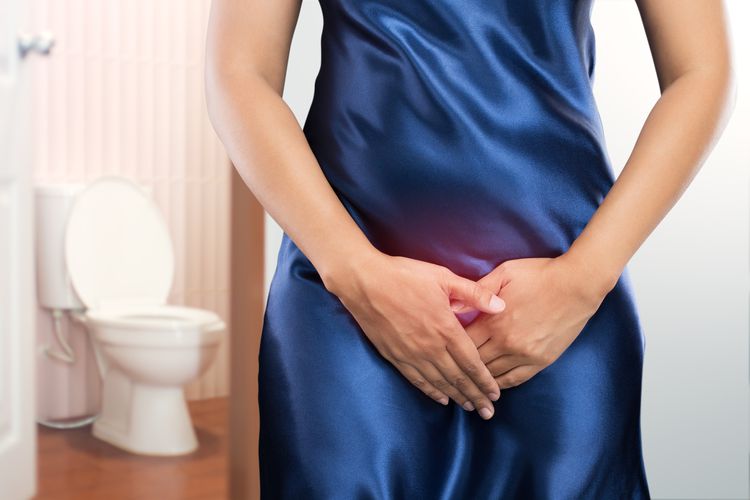What are the symptoms of prostatitis?
Prostatitis is inflammation of the prostate gland, and its symptoms can vary depending on the type and severity of the condition. Common symptoms of prostatitis include:
- Pain or Discomfort: This can occur in the lower abdomen, lower back, perineum (area between the anus and the scrotum), or genitals. Pain may also be felt during or after urination or ejaculation.
- Frequent Urination: Increased urgency to urinate, especially during the night (nocturia), is a common symptom.
- Difficulty Urinating: This may include a weak urine stream, trouble starting or stopping urination, or a feeling of incomplete bladder emptying.
- Painful Urination: Burning or stinging sensations during urination are common.
- Flu-like Symptoms: In some cases, especially with bacterial prostatitis, flu-like symptoms such as fever, chills, and fatigue can occur.
- Sexual Dysfunction: Symptoms might include painful ejaculation or erectile dysfunction.
- Painful Ejaculation: Discomfort or pain during or after ejaculation can be a sign of prostatitis.
- Discharge: In some cases, there may be a discharge from the penis.
Prostatitis symptoms can overlap with those of other prostate conditions, such as benign prostatic hyperplasia (BPH) or prostate cancer, so it’s important to consult a healthcare provider for an accurate diagnosis and appropriate treatment.
What are the causes of prostatitis?
Prostatitis can arise from several factors, depending on the type of the condition. Bacterial infections are a common cause, particularly in acute prostatitis, where bacteria enter the prostate gland from the urinary tract or as a complication of urinary tract infections (UTIs) or sexually transmitted infections (STIs). Chronic bacterial prostatitis is less common and results from a persistent bacterial infection, often due to an inadequately treated acute infection.
In cases of nonbacterial inflammation, also known as chronic prostatitis/chronic pelvic pain syndrome (CP/CPPS), the exact cause is often unclear. Potential factors include autoimmune reactions, where the immune system mistakenly attacks the prostate; pelvic floor muscle dysfunction, involving muscle tension or spasms in the pelvic area; nerve irritation, where nerves in the pelvic region become inflamed; and a history of previous infections that might lead to chronic symptoms even after the initial infection has resolved.
Additionally, prostatitis can be associated with other medical conditions such as urinary tract obstructions or recent surgery or trauma involving the prostate or pelvic area. In many instances, especially in chronic cases without a bacterial infection, the precise cause remains unknown.
How is the diagnosis of prostatitis made?
Diagnosing prostatitis involves several steps to accurately identify the condition and determine its cause. The process begins with a detailed medical history and a physical examination, including a digital rectal examination (DRE) to assess the size, shape, and tenderness of the prostate gland.
To confirm the diagnosis, a healthcare provider may order additional tests. A urinalysis, which examines a urine sample, can help detect signs of infection or inflammation. For suspected bacterial prostatitis, a urine culture might be conducted to identify the specific bacteria causing the infection.
Blood tests are often performed to check for elevated prostate-specific antigen (PSA) levels, which can indicate prostate inflammation or infection, though elevated PSA levels can also be due to other conditions such as benign prostatic hyperplasia (BPH) or prostate cancer.
In some cases, a prostate secretions test involves massaging the prostate to obtain secretions for laboratory analysis. This can help identify the presence of bacteria or white blood cells that suggest infection or inflammation.
Imaging tests, such as an ultrasound of the prostate or a transrectal ultrasound (TRUS), may be used to visualize the prostate and help in diagnosing conditions or complications. If prostatitis is chronic or complicated, further diagnostic procedures like a CT scan or MRI might be used to evaluate the extent of inflammation or rule out other conditions.
The combination of these diagnostic approaches helps determine the type of prostatitis and guides appropriate treatment.
What is the treatment for prostatitis?
Treatment for prostatitis depends on the type and underlying cause of the condition:
For acute bacterial prostatitis, treatment usually involves a course of antibiotics to target the infection. Pain relief and supportive measures, such as hydration and over-the-counter pain medications, may also be recommended. In severe cases, hospitalization might be necessary for intravenous antibiotics and supportive care.
Chronic bacterial prostatitis also requires antibiotic therapy, which may need to be extended for a longer duration than for acute cases. In some instances, adjusting the antibiotic based on culture results may be necessary. Pain management and lifestyle adjustments, such as increased fluid intake and frequent urination, can help alleviate symptoms.
For chronic prostatitis/chronic pelvic pain syndrome (CP/CPPS), which is not caused by bacterial infection, treatment focuses on managing symptoms. This may include:
- Medications: Alpha-blockers can help relax the muscles around the prostate and improve urinary symptoms. Nonsteroidal anti-inflammatory drugs (NSAIDs) or other pain relievers can reduce discomfort. In some cases, medications such as muscle relaxants or antidepressants may be used to manage pain and discomfort.
- Physical Therapy: Pelvic floor physical therapy may be recommended to address muscle tension and improve pelvic muscle function.
- Lifestyle Changes: Modifying habits like reducing stress, avoiding irritants (such as caffeine and alcohol), and practicing regular exercise can help manage symptoms.
- Heat Therapy: Applying heat to the pelvic area or taking warm baths may provide symptom relief.
- Prostate Massage: Some practitioners may recommend prostate massage to help alleviate symptoms, though this is less commonly used.
- Psychological Support: Counseling or therapy can be beneficial for managing the emotional and psychological aspects of chronic prostatitis.
For prostatitis associated with other conditions like urinary tract obstructions, addressing the underlying issue through procedures or surgeries may be necessary to relieve symptoms.
Treatment plans are tailored to each individual based on the specific type of prostatitis, severity of symptoms, and overall health. Regular follow-up with a healthcare provider is essential to monitor progress and adjust treatment as needed.

Leave a Reply
You must be logged in to post a comment.